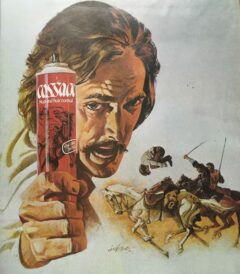It was a mainstay of 60s and 70s variety and is still sadly missed (by me at least)

One might argue that whenever Boris Johnson and Donald Trump are in the same room, the art of ventriloquism will never die. But the 60s and 70s were the decades of TV ‘variety.’ It’s what programme schedulers thought the Great Viewing Public wanted, and they were probably right at the time. Three channels wasn’t a huge amount of choice and so it was easy to get big viewing figures if you gave some popular performers their own shows. Cilla, Dusty, Lulu, Englebert, Cliff, Val, Des and Tarby all had their own shows, and if you factor in all the quiz and comedy vehicles that were around also, this was a fecund time for ‘B’ list variety performers, as these shows desperately needed a wide range of guest acts. As well as (even more) singers, comedians, magicians and dancers it was also a good time for novelty acts of which ventriloquists were at the top of the tree. It was vital to vary the guest acts on any of those programmes, hence the description ‘variety’.
In the 60s and 70s ventriloquists were as common as magicians and were a peculiarly old fashioned act dating back to the music halls. In those days bad ventriloquists could get away with murder as they were suitably far away from the audience therefore few could see their lips move, so it was really only the best that made it on to the prying eye of TV. That said, some truly bad ventriloquists did slip through the net. More on them later. For me, it was an act that is greatly missed and there really aren’t many platforms for them now, Nina Conti excepted, which is sad but I feel a celebration of the best of them is certainly in order. But we have to start with one of the greatest and a truly 60s personality in many ways. Lenny The Lion!
1. Terry Hall and Lenny the Lion
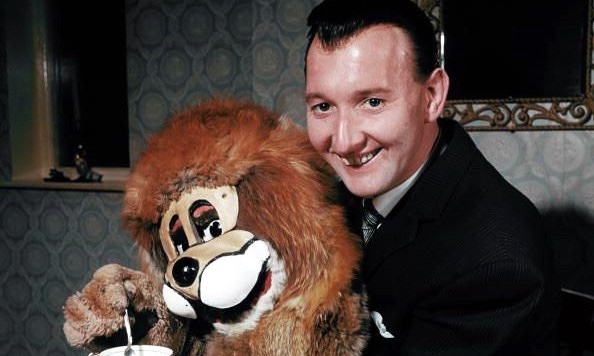
Lenny happens to be one of my earliest TV memories and I have a very clear recollection of watching The Lenny The Lion Show in the early 60s. Terry Hall was from Oldham and started ventriloquism at the age of 15. He was one of the first to develop a non-human character in the shape of Lenny. Most people in the 50s were still listening, yes ‘listening’, to ventriloquist Peter Brough and Archie Andrews on the radio and Lenny was one of the first to make that crossover on to TV.
Lenny was a hugely endearing character who was the campest ventriloquist’s puppet ever. He talked in a high-pitched voice with a slight speech impediment where he couldn’t pronounce his ‘r’s and had a right hand that gesticulated wildly, his catchphrase being, ‘Aw, don’t embawass me!‘ In later years he appeared in a range of TV ads for Trebor Mints, or in Lenny’s case, ‘Twebor Mints‘. In the early days of the act Lenny had a set of very ferocious teeth but these were removed when it occurred to Terry Hall they might frighten children.
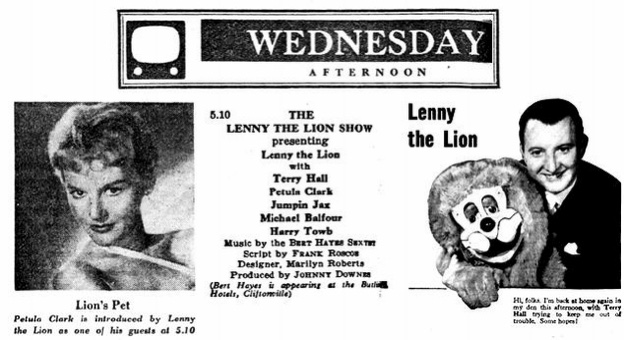
Lenny’s first TV appearance was on a 1956 comedy show which also featured the TV debut of Eric Sykes in a one-off comedy called Dress Rehearsal. A year later Lenny got his own show, not unreasonably titled The Lenny the Lion Show. This lasted until 1961 and featured a range of tried and tested MOR guest acts including Petula Clark, Pearl Carr and Teddy Johnson (Sing Little Birdie!) and the ubiquitous Russ Conway. Norman Vaughan (London Palladium, The Golden Shot, Bullseye) was a regular contributor during series 5 in 1961 and another interesting footnote about series 4 was that one of the writers was, of all people, Pat Phoenix (the legendary Elsie Tanner from Coronation Street). How queer!
It was around this time that Lenny and Terry paid a visit to Millwall’s ground, The (old) Den, where he was photographed with players and fans. Millwall’s nickname is The Lions and it was an illustration of Lenny’s fame at the time that he was invited to make what must have been a memorable appearance. As far as I can find there are no pictures of this momentous event available, unless you know differently? Also in 1958 Lenny The Lion went to the US and appeared on the legendary Ed Sullivan Show.
Lenny’s next series was the one that made his name properly and launched him into 60s superstardom, Pops and Lennie. TV was just coming to terms with the cultural revolution that was happening in the UK at the time. 1962 was the year The Beatles were launched into the stratosphere and every TV show wanted a piece of the action. With this in mind the BBC chose Lenny as the unlikely host of one of their first ‘pop’ programmes. Maybe they thought it was only the very young who would have any interest in this new ‘pop’ phenomenon. Either way, it was an inspired choice. On 16 May 1963 The Beatles, on only their second TV appearance, appeared on Pops and Lenny playing their new single ‘From Me To You‘ and then ‘Please Please Me‘. Of course, in yet another act of cultural vandalism the tapes of this performance were wiped but a couple of other acts from PAL do still exist. Like so many variety programmes at the time the show was an uncertain balance between the old and the new. As well as The Beatles, new breakthrough acts like Gerry and the Pacemakers, The Tornados and Jet Harris and Tony Meehan (ex of The Shadows) were featured but more unthreatening MOR artists also appeared such as Craig Douglas, Acker Bilk and Bert Weedon (We are normal, we dig Bert Weedon), so as not to frighten too many of the horses. The Craig Douglas sequence still exists and the intro and outro by Lenny gives a great example of his camp-as-anything but very distinctive schtick.
A fascinating spin-off from this series was that David Bowie‘s dad, Hayward Jones, worked on the show and, as his son was a big Lenny fan, launched the Lenny the Lion Fan Club. These are the sort of diamonds in the trivia rough that make life so much more interesting.
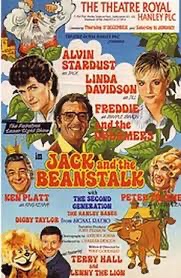
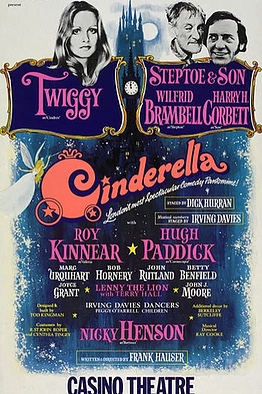
So long as telly still featured ‘variety’ there was always a spot for Lenny and he continued to appear right up to the 80s where he made a guest appearance on Rainbow, Crackerjack and had his own educational series for children, Reading With Lenny. Seaside and Panto roles were also regular and he appeared on the same bill with some curious lineups. He had his own strip cartoon in the children’s comic TV Comic.
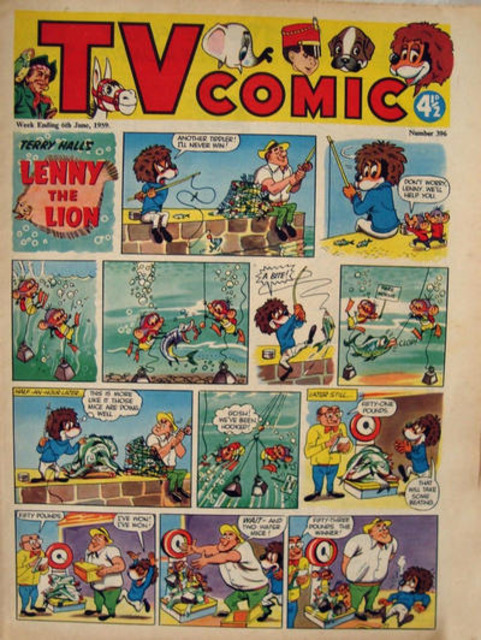
Lenny The Lion was as important to growing up in the 60s as Blue Peter and Crackerjack were. He released a number of records and even had his own song.
I’m Lenny The Lion and I’d like to say
I’m strong and ferocious, but not in that way
I wish I had courage and I’d shout out with glee
That I’m Lenny The Lion, so don’t embawass me!
Truly a sixties icon and a shining example of the ventriloquist’s art.
2. Ray Alan and Lord Charles/ Tich and Quackers
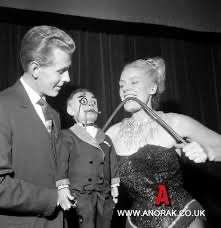
In the world of ‘vents’, and there were quite a few of them, Ray Alan was generally seen as the the best around. Not only was it virtually impossible to see his lips move, but he had a number of characters he worked with, each with not only a different voice but also with different accents. There was more to Ray Alan than purely ventriloquism, however. Like magician David Nixon (See Tarbuck Memories: Sunday Night at the London Palladium) he was a consummate and natural TV performer and was a regular guest on panel shows and as presenter. But it was ventriloquism that launched his career and, like Lenny the Lion, his shows were also very early TV memories for me.
The first Ray Alan vehicle I recall was The Tich and Quackers Show. Tich was a small schoolboy in a blazer and hair that stuck up like a policeman’s helmet. Quackers was a duck who really only quacked and was operated by one Tony Hart of ‘Take Hart‘ and Vision On fame, who, incidentally also provided artwork for the Lenny the Lion Show. Tich’s catchphrase was, ‘Ehhh ya daft dook!‘ Tich and Quackers had a show between 1963 and 1968, 141 episodes in all and despite this, sadly, little footage of them seems to exist other than still photographs. Like Lenny the Lion they even had their own comic strip in TV Comic which lasted until 1971, well after Ray Alan stopped performing with them. Tich and Quackers even muscled in to The Beatles‘ ubiquity (who didn’t?) by releasing a single entitled ‘Santa Bring Me Ringo‘ in 1964.
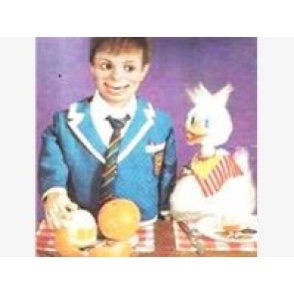
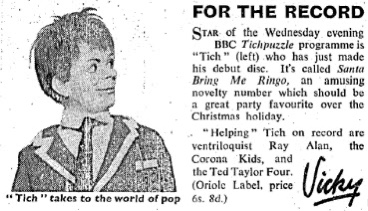
The Tich and Quackers Show attracted a who’s who of 60s musical talent, arguably better than Lenny’s line-ups although, to be fair, T and Q didn’t manage to get The Beatles. Adam Faith, The Tremeloes, The Love Affair, Lulu, Sandy Shaw and The Merseybeats all graced the T and Q studios. Weirdly, for Scottish readers, the guest list even included Scottish folk singing stalwarts Robin Hall and Jimmy Mcgregor!
It was only when Ray Alan introduced his latest creation Lord Charles, that his guest spot credentials rose hugely. Lord Charles was an upper-class, always slightly sloshed, monocled aristocrat with an eye for the ladies. His catchphrase, ‘You silly arse‘ was quite risqué for peak time broadcasting but no one seemed to notice. Lord Charles and Ray Alan guested on pretty much every variety show available in the 60s and 70s. He was popular on these types of shows because he was good at what he did, his act was generally funny (not all vents were, read on!), his act was easy to set up and film and the star of the show could always have an amusing rap with Lord Charles as Ray Alan was an excellent ad libber. He appeared on shows during the late 60s and all of the 70s including Sunday Night at the London Palladium, The Val Doonican Show, Dee Time, It’s Lulu!, David Nixon’s Magic Box and The Golden Shot (hurrah!) amongst many others. He also probably holds the record for the number of appearances on The Good Old Days (16), that torturous, interminable, utterly tedious Friday night experience. God, I hated The Good Old Days. But if he was on, it at least lessened the monotony a little.
In 1954 Ray Alan, just starting out in his career, was suddenly thrust into the literal limelight when he got the gig to support Laurel and Hardy in their UK theatres farewell tour. Comedy legend Harry Worth, who was a ventriloquist at the time, had to pull out and Ray Alan was asked to replace him. It was while working with the legendary pair that he got the idea for Lord Charles after studying Stan Laurel‘s face and a little later Alan spotted a posh and slightly pissed spectator at a cabaret event and Lord Charles was born. His slightly irreverent brand of humour and technically brilliant technique always brightened up those shockingly formulaic star vehicles and highlighted how much these acts are missed. So long, of course, as the ‘vents’ were good at their job, but sadly this wasn’t always the case.
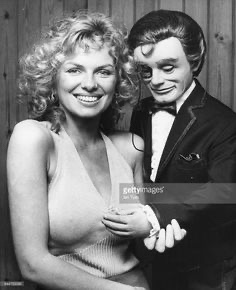
3. Roger De Courcey and Nookie Bear
Step forward Roger de Courcey and Nookie Bear. De Courcey was the winner of the 1976 New Faces Grand Final which suggests there must have been a paucity of contenders that particular year. In fact, he beat the Ukranian Black Sea Cossacks, comedy trio Bollards, vocal group Piggleswick and, of all people, Andy Cameron who was also competing in that 1976 clash of the titans.
His act was fairly one dimensional, featuring a slightly boss-eyed bear called Nookie whose voice sounded oddly similar to Roger De Courcey’s. It wasn’t that he was a bad ventriloquist, he just wasn’t very funny. And Nookie’s voice had no comedy strangeness to it, he just sounded like a dull old man. And sometimes you couldn’t really make out what he was saying, which was maybe deliberate.

In 1981 Southern TV gave Nookie his own series entitled Now For Nookie, which was about the funniest element of the show. That said, no nookie was in evidence during this most amateur of spectacles and the routines between De Courcey and Nookie were lugubrious to say the least. The one memorable element of this short-lived confection was the line-up of guest performers, which read like an A-B of ‘D’ list artists and even a couple ‘A’ listers whose stock had fallen worryingly in the late 70s. Lulu, Clodagh Rodgers, the inevitable Vince Hill and even more inevitable Bernie Winters and Schnorbitz all guested on the show and indulged in a bit of mildly amusing knockabout banter with the mournful Nookie. It’s unlikely Anita Harris, another 70s guesting luminary, was asked how much she liked Nookie as the show was going out at 5.00pm. That would have been funny though.
In his spare time Roger de Courcey was and still is also an agent for the likes of Rick Wakeman and David ‘Kid’ Jensen. Under the banner Dick Horsey Management (geddit?) he also looks after clients as wide and varied as the Single Ply Roofing Association, Biggleswade FC and Yorkshire Cricket Club.
Sadly Roger’s ‘venting’ act was not quite so wide and varied, but he was following the likes of Ray Alan and Terry Hall. Tough acts to follow. But there was always The Wheeltappers and Shunters.
4. Keith Harris and Orville
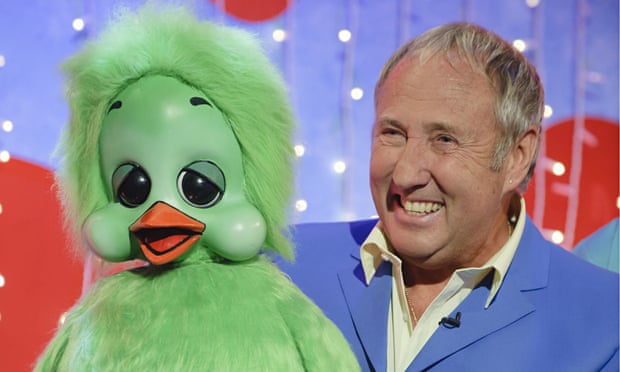
So far the vents featured were fairly run-of-the-mill people, varying in abilities but other than their talent, little to make them stand out. Nothing wrong with that, the 60s and 70s were relatively sober times for most. But what about Keith Harris? It’s fair to say that his private life tended to eclipse his professional life, such was the rollercoaster he rode in his later years. And it was also the time when showbiz gossip was invented.
Keith Harris came from a showbiz family, both his parents were performers and part of his dad’s act was ventriloquism. In fact, the young Keith actually worked as his dad’s dummy by sitting on his knee and just opening his mouth in time to his dad’s venting. By the mid 70s after stints with that most 60s of shows, The Black and White Minstrels, Harris got his own show which was broadcast at lunchtime, Cuddles and Co. Cuddles was a big red monkey and had a few friends who joined him. One of them eventually became the character Keith Harris is most identified with, the green, feathery duck with the mournful voice and huge nappy, Orville. As a vent Harris was pretty good and Orville was a sensation. For a while.

The success of Orville eventually led to Harris getting his own prime time show on a Saturday evening which ran from 1982 till 1990. And Orville managed what neither Lenny the Lion or Tich and Quackers could, he had a huge top 10 hit in 1982. I Wish I Could Fly sold over 400,000 copies getting to number 4 in the charts at time when you had to sell shed loads to get into the charts. It was even written by talent show royalty, the legendary Bobby Crush! That said, it became one of the most irritating records of all time and some recent polls have voted it the worst record ever released. Praise indeed! Throughout the course of the 80s Keith and Orville went from strength to strength, but, like the public’s perception of the record, TV fell out of love with Keith and Orville and his career took a downward spiral. Times were changing and harmless variety became old hat, people wanted something with more of a bite which ruled out Keith and Orville for a start. They still appeared in many quiz shows, pantos, summer seasons and even became a subject for Louis Theroux, where Keith came across as slightly bitter about the way TV had turned its back on him.
But the winds of change blew in an unexpected way in the late 80s, early 90s. What The Stage magazine described as ‘..knowing post-modern irony‘ created a whole new career for Keith and he suddenly began appearing on TV again. Programmes like Never Mind The Buzzcocks, Peter Kay’s Is This The Way To Amarillo video, Harry Hill and Banzai all featured K and O and he even won the reality show The Farm in 2005. An offer to be in the second series of Extras was turned down as it required him to pretend to be a bigot and racist. ‘Filth‘ he called it but he was old school and drew a veil over his association with The Black and White Minstrels.
In what was a tough decade for Keith the three Ds were never far away: drink, depression and divorce. In fact, he was married and divorced three times in a 12 year period. Only Orville was a constant for him and that’s how he would have wanted to be remembered and he certainly is remembered. And not just for that irritating song.
All in all vents have entertained us for many years and with the very good Nina Conti, ventriloquism has almost become fashionable again and not just in an ironic way. People like Ray Alan and Terry Hall were mainstays of the variety scene and created characters who wouldn’t seem out of place even today. They added a bit of genuine fun to some shockingly dull variety vehicles and were truly associated with some of the best moments of the 60s and 70s. And for that I thank them. And I haven’t even mentioned the great Basil Brush!
Yet.
